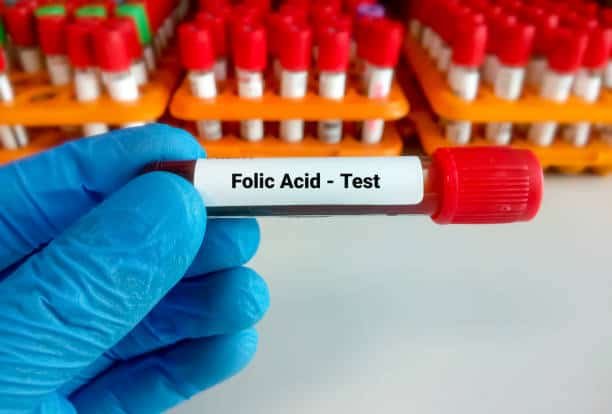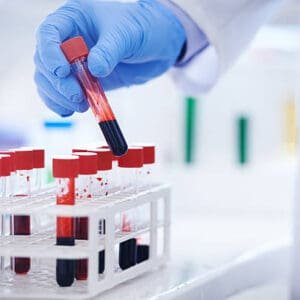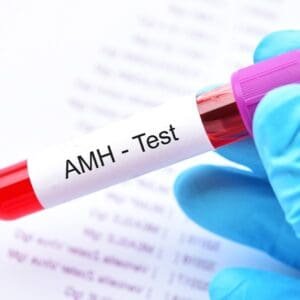Description
Definition
Folic acid is a type of B vitamin. This article discusses the test to measure the amount of folic acid in the blood.
Alternative Names
Folate – test
How the Test is Performed
A blood sample is needed.
How to Prepare for the Test
You should not eat or drink for 6 hours before the test. Your health care provider may tell you to stop taking any drugs that may interfere with test results, including folic acid supplements.
Drugs that can decrease folic acid measurements include:
- Alcohol
- Aminosalicylic acid
- Birth control pills
- Estrogens
- Tetracyclines
- Ampicillin
- Chloramphenicol
- Erythromycin
- Methotrexate
- Penicillin
- Aminopterin
- Phenobarbital
- Phenytoin
- Drugs to treat malaria
How the Test will Feel
You may feel slight pain or a little sting when the needle is inserted. There may be some throbbing at the site.
Why the Test is Performed
This test is done to check for folic acid deficiency.
Folic acid helps form red blood cells and produce DNA that stores genetic codes. Taking the right amount of folic acid before and during pregnancy helps prevent neural tube defects, such as spina bifida.
Women who are pregnant or planning to become pregnant should take at least 600 micrograms (mcg) of folic acid every day. Some women may need to take more if they have a history of neural tube defects in earlier pregnancies. Ask your provider how much you need.
Normal Results
The normal range is 2.7 to 17.0 nanograms per milliliter (ng/mL) or 6.12 to 38.52 nanomoles per liter (nmol/L).
Normal value ranges may vary slightly among different labs. Talk to your provider about the meaning of your test results.
The examples above show the common measurements for results for these tests. Some labs use different measurements or may test different specimens.
What Abnormal Results Mean
Lower-than-normal folic acid levels may indicate:
- Poor diet
- Malabsorption syndrome (for example, celiac sprue)
- Malnutrition
The test may also be done in cases of:
- Anemia due to folate deficiency
- Megaloblastic anemia
Risks
There is very little risk involved with having your blood taken. Veins and arteries vary in size from one person to another and from one side of the body to the other. Taking blood from some people may be more difficult than from others.
Other slight risks from having blood drawn may include:
- Excessive bleeding
- Fainting or feeling lightheaded
- Hematoma (blood accumulating under the skin)
- Infection (a slight risk any time the skin is broken)






Reviews
There are no reviews yet.